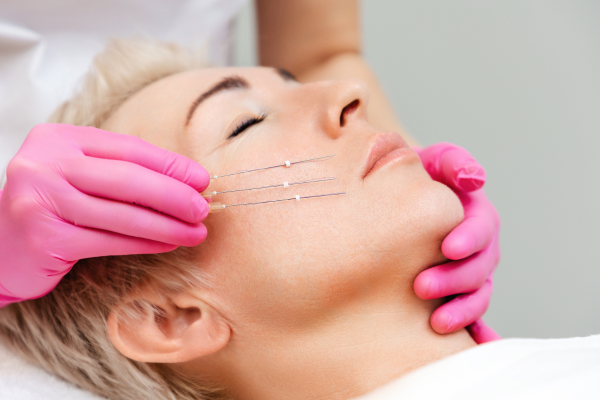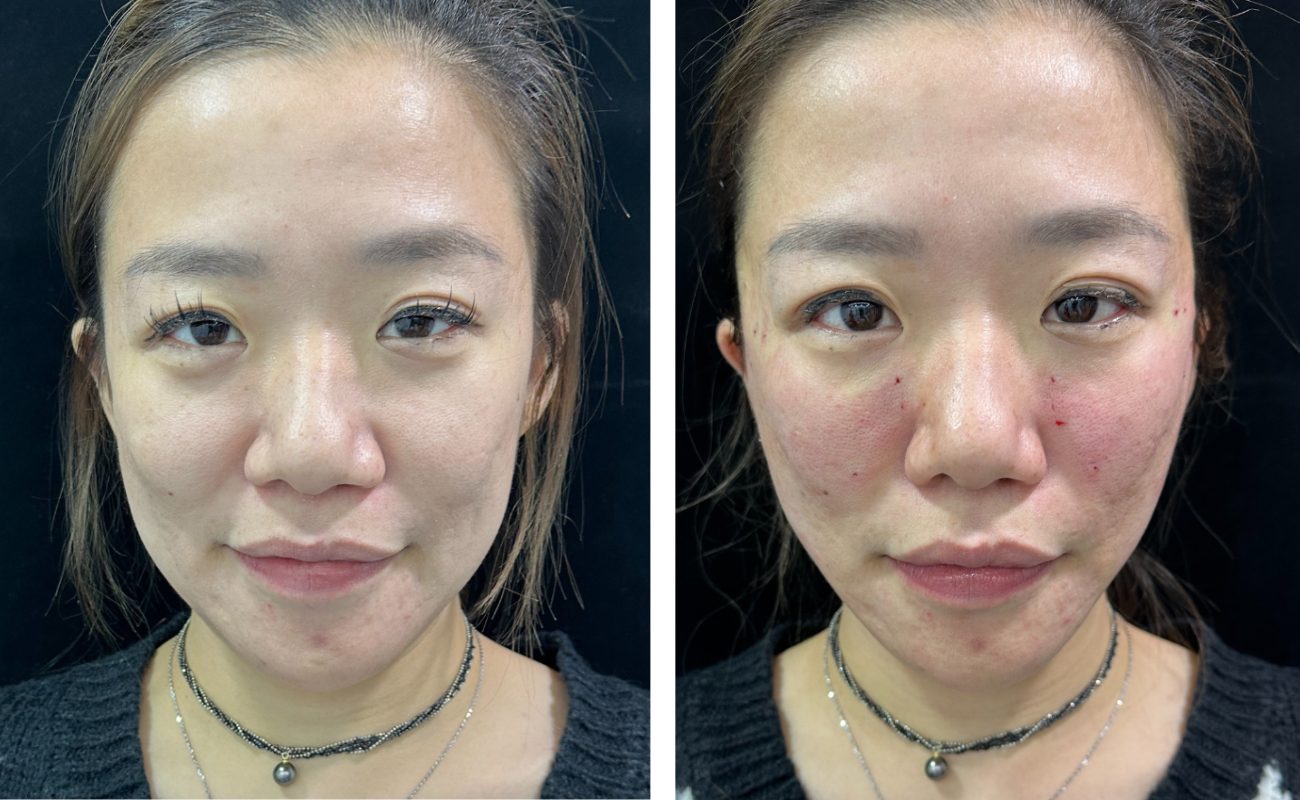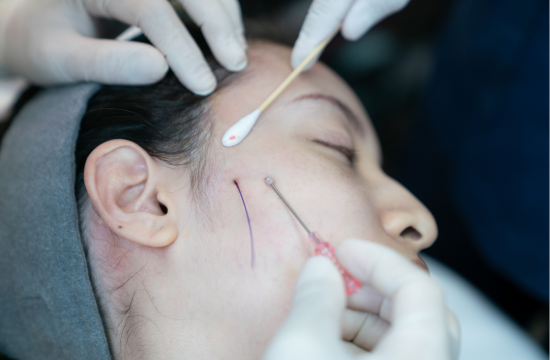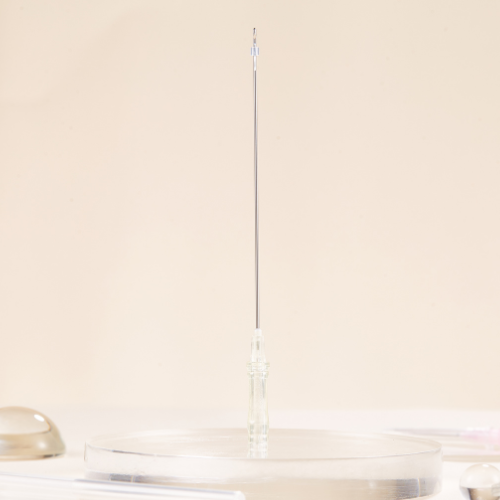
Thread lifts have recently seen a spike in demand due to being less invasive compared to surgery. Moreover, they have a lower complication risk, recover quickly, and are less painful. They also stimulate collagen production, improving the skin’s elasticity and tone. However, there is a catch.
Thread lifts don’t always show results. Or, sometimes, it takes time before the results show.
So, as a business owner, how do you help a client who has just complained about no results after the thread lift procedure? Perhaps you did the procedure, or they had someone else do it, and now they need your help solving this problem.
Here is what to do next:
1. Take Note of Their Complaint—Reasons for No Results after Thread Lift
When a client decides to settle on a thread lift procedure, they have certain expectations. If these expectations are not met, it can be disappointing and frustrating.
To help with this situation, allow them to explain the expectations they had and what they’ve observed. Here are some scenarios of “no results after a thread lift” you should be aware of:
A. No forehead or brow lift
A successful brow or forehead lift is achieved through upward tissue repositioning of either part.
The threads should subtly elevate the forehead or brow as they are inserted along the temple and brow areas. However, inadequate lift can lead to an unchanged brow or forehead appearance, which can lead to the client’s complaint.
B. Absence of neck and jawline improvement
Neck and jawline lifts entail muscle and skin repositioning. Threads are placed at particular angles to enhance contours and tighten skin. However, poor thread placement leads to persistent laxity.
So, you’ll have a client come in complaining about loose skin or contours around the neck or jawline.
C. Unchanged marionette lines

Just like the marionette puppet, marionette lines run from the corners of your client’s mouth to the chin. They occur due to various reasons, including repeated facial expressions and age-related decline in elastin and collagen.
To get rid of the lines, threads are placed perpendicular to the marionette lines to lift sagging tissue, minimizing the lines’ appearance.
Sometimes, the client may be advised to combine the treatment with fillers for optimal results. However, if the threads lack the proper tension, leading to insufficient lift, the client is less likely to see the expected changes.
D. Inadequate reduction of nasolabial folds
Nasolabial folds are creases running from the sides of the nose to the corners of your client’s mouth. They occur due to fat descent and skin laxity. So, the threads are inserted along the fold direction to elevate sagging tissue, reducing fold prominence.
In most cases, nasolabial folds require an expert to anchor the threads to deeper structures. If poor placement or thread tension takes effect, the folds are likely to stay, leaving the client dissatisfied.
E. Lack of contour enhancement
Threads can also combat facial contours, especially those around the jawline or cheekbones.
The threads’ placement depends on your client’s anatomy, requiring diligent evaluation of the client’s soft tissue and bone structure before the procedure. If poorly evaluated, there is a high probability of poor thread positioning, leading to visible contours.
F. Minimal lifting or tightening
Sometimes, the client might come in complaining about the degree of lift or tightness. The results might be there. However, they are generally not satisfied with the lift or tightness level.
When administering the procedure, a practitioner must be able to tension threads adequately according to the client’s requirements. If the threads are not precisely placed in the subcutaneous tissue, the skin may give in, leading to undesired results.
G. Overall lack of visible changes

There are clients who visit practitioners for a holistic thread lift procedure. They desire to address skin repositioning in various parts of their face. However, factors including bone changes and volume loss do impact overall appearance even after a successful procedure.
Some clients may be unaware that threads don’t transform the entire face. Threads are suited for tightening and lifting skin. Other treatments are needed to achieve other overall facial cosmetic corrections. So, this category of clients may still come in with complaints.
These are all the unique cases you might face. Yours is to observe the part specified by the client to determine what could be done. But before recommending a fix, consider how long the threads have been in place.
2. Consider How Long the Threads Have Been in Place
Thread lifts take time before noticeable results show. Healing and collagen production occur gradually over about three to six months. If your client’s procedure was not finalized long ago, advise them to give the threads time to dissolve into the skin, realizing the expected results.
Observe the threaded area and give them directives on the best practices to work with as they allow the area to heal. Here are some post-procedure aftercare practices you can recommend to ensure desired results and a smooth recovery:
Thread lift post-procedure Aftercare Practices
You should follow some professional tips to avoid No Results after Thread Lift.
Avoiding strenuous activities
The client should not engage in activities bound to increase blood pressure or heart rate such as vigorous exercise and heavy lifting.
High-intensity activities can impact the thread placement, potentially leading to swelling. Inform the client to keep off strenuous activities for about one to three weeks from when the procedure was done.
Being gentle with the skin
For at least three weeks into the procedure, the client should avoid massaging, rubbing, and repetitively touching the treated area.
Advise the client to pat the treated area when cleaning their face or applying different products. Being gentle with the skin allows for collagen production and reduces the chances of the threads shifting places.
Following a soft diet
Soft and easy-to-chew foods should be part of the client’s routine for the first few weeks. Crunchy, chewy, or hard foods require rigorous jaw movements, which are more likely to negatively impact the healing process as they disturb the threads’ alignment and placement.
Staying cool
Exposure to high-heat environments such as steam rooms, sunbathes, and saunas should be avoided. The client should be informed that excessive heat to the treated areas can weaken the threads and increase the chances of swelling.
Staying hydrated and maintaining a healthy diet

The client should have a balanced diet rich in minerals and vitamins to contribute to the longevity of the results. The same goes for staying hydrated. Inform them also to avoid or minimize smoking and alcohol intake, as this can negatively impact collagen production.
Avoiding specific dental procedures
If the client has dental work that requires wide mouth opening, they should postpone the procedure for about two to four weeks. Extensive mouth opening after the thread lifting procedure can stress the thread insertion areas, leading to swelling and poor results.
Protecting the skin and skipping makeup for some time
You may also advise the client to apply broad-spectrum sunscreen daily to avoid skin burns or UV damage. If they are to use hydrating skincare products, inform them to choose gentle products. Moreover, the client should avoid makeup for a while to allow the skin to breathe and heal.
Attending follow-up appointments
After examining the treated area, you can schedule follow-up appointments with your client. Regular check-ins to assess the healing progress allow you to direct the client on what to do and to manage their expectations.
Also, share your contacts with the client so they can reach you in time if they have further concerns or notice unusual symptoms.
These aftercare practices should help the client who’s yet to give the procedure time to heal and show the final results. If the client has completed about five months and has yet to see visible signs of improvement in the treated area, you can opt for either solution three or four below.
3. Recommend an Alternative Thread Variety After Thorough Examination
The thought of trying out another thread procedure might not settle well with your client. Before beginning to discuss a possible re-do of the procedure, evaluate the initial procedure. Assess initial thread placement and tension and ask about the thread type used for the previous procedure.
Aim to make the client as comfortable as possible by discussing their initial expectations. Did they go into the procedure with realistic goals? Encourage the client to express themselves openly. Let them specify the areas in which they expect improvement and the concerns they may have.
You should also consider whether there is any form of swelling. Compare before-and-after pictures to evaluate the healing process objectively. Let the client know if you find it feasible to go ahead with a second trial.
Some thread options you can recommend include:
A. PCL Threads

Made from biocompatible material, polycaprolactone (PCL) threads will leave the client with long-lasting results due to their slow absorption rate. They also stimulate more elastin and collagen production, unlike the other threads.
Since they can stay in the tissue for about a year, they contribute to better tissue tightening and offer more extended support. However, these threads are not suitable for severe laxity. Use them for mild to moderate skin laxity.
B. PDO Threads
PDO threads are composed of biodegradable polyester and dissolve after about 6 months of insertion. They stimulate collagen production and require a small entry point. However, they also work best with mild to moderate skin sagging.
C. PLLA Threads
Due to their poly-L-lactic acid composition, PLLA threads are long-lasting. The results show gradually, over about two years, enhancing contours and volume. If you are to recommend this thread, let the client know it may take even longer for them to see results as collagen rebuilds gradually.
If you don’t find your client to be a suitable candidate for a second thread lift trial, offer them an alternative treatment.
4. Recommend Another Form of Treatment After Thorough Examination
There are other cosmetic treatments suited for enhancing contours, lifting and tightening skin, and also getting rid of wrinkles or deep lines. Some of the most effective ones include:
A. Dermal Fillers
Like thread lifts, dermal fillers are minimally invasive, minimizing the pain and risks of traditional surgery. They are used to remove facial contours, soften wrinkles, and restore lost volume. And like thread lifts, they can help with cosmetic concerns around the lips, cheeks, nose, and more.
Dermal fillers grant clients instant gratification as they are injected into the skin, plumping and lifting it with little to no downtime. This means a client can get the procedure and witness the results on the same day. The results last from 6 to 18 months, though.
B. Radiofrequency (FR) Treatment
C. Radiofrequency treatment stimulates collagen production deep within the client’s skin. Even though the client may be required to come in for multiple RF sessions, the results are achieved pretty fast.
D. RF treatment can reveal more youthful skin by smoothing the skin’s texture and tightening sagging skin. It helps refine jawlines, soften wrinkles, lift brows, and eliminate creases around the neck.
E. Ultrasound Skin Tightening (Ultherapy)
Taking advantage of the capabilities of ultrasound waves, Ultherapy can tighten and lift the skin over time, about 2 to 3 months. It stimulates and tightens collagen fibers, leading to a smoother skin texture.
Ultrasound skin tightening can lift brows, refine neck contours, and smoothen jawlines. Moreover, it is a non-invasive procedure that leaves long-lasting effects.
All these cosmetic treatments have pros and cons to consider. Yours is to listen attentively and understand your patient’s medical history, lifestyle activities, and overall goals. Then, run a comprehensive evaluation of skin concerns, quality, and facial anatomy.
After the evaluation, present the alternative treatments to your client and highlight the pros and cons to help them decide.
Closing Words
Sometimes, clients are more likely to notice immediate visible lifts after a thread lift procedure. For some, it might take time, while others may stay longer without ever seeing results.
Even though the recommended post-procedure wait time after a thread lift ranges from 3 to 6 months, some clients may complain about not seeing results.
It is up to you, as the expert, to step in and offer guidance to the client. Conduct a thorough assessment and offer either of the solutions highlighted, leaving your client satisfied and feeling understood or heard.
Expound Your Thread Lift Options with Yastrid!
As a cosmetic solutions expert, you should be able to offer different types of threads based on a client’s assessment. Yastrid can steadily supply you with various threads, including PCL, PDO, and PLLA.
With over 16 years of experience manufacturing medical aesthetics products, you can be assured that CE 2292 and ISO13485-approved products are available. By collaborating with Yastrid, you will have factory-direct prices and support from their customer service department. Try their free samples to ascertain the quality of the products.
